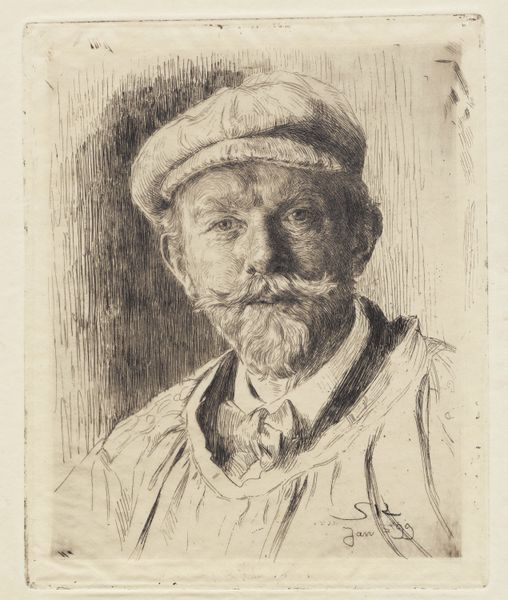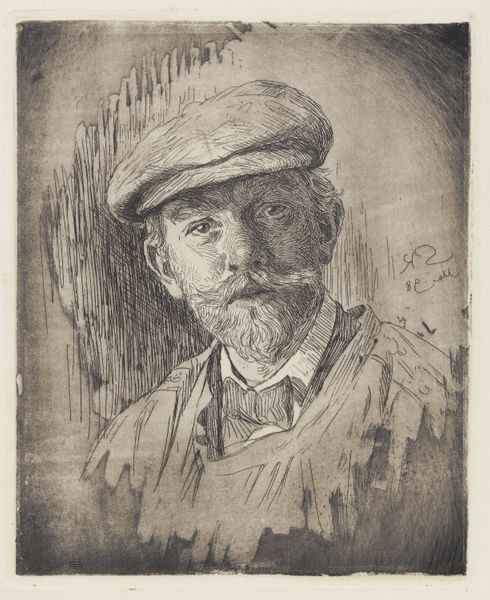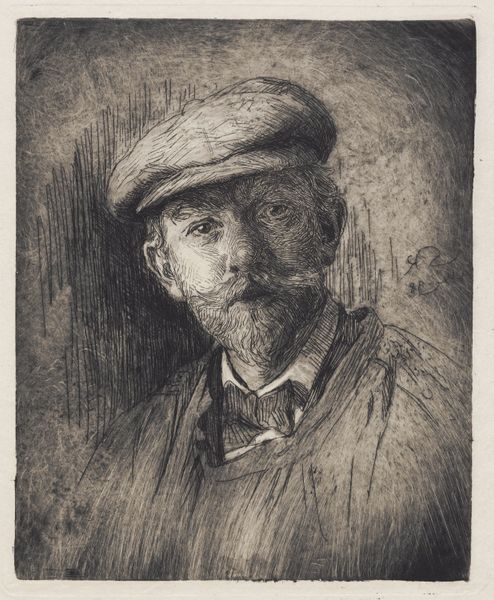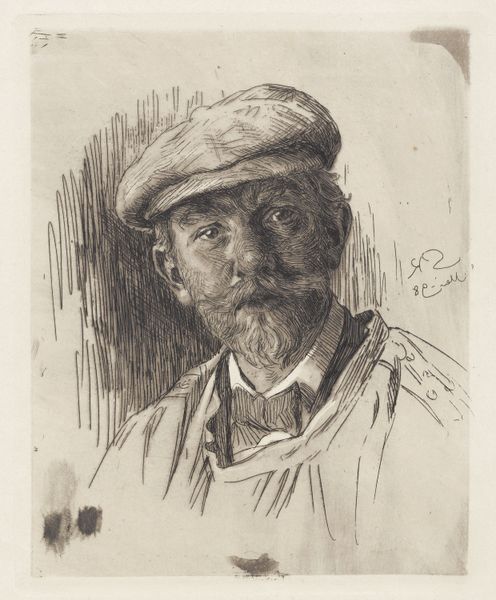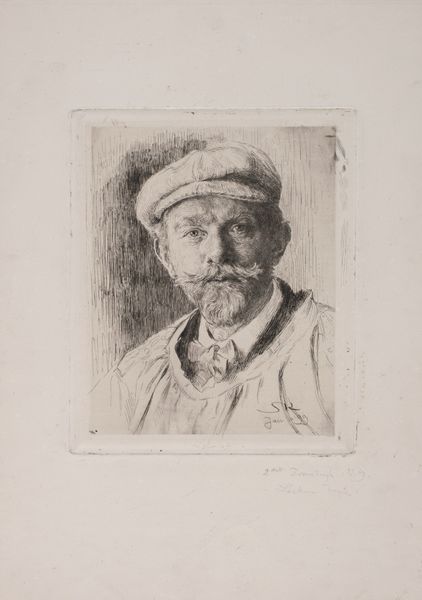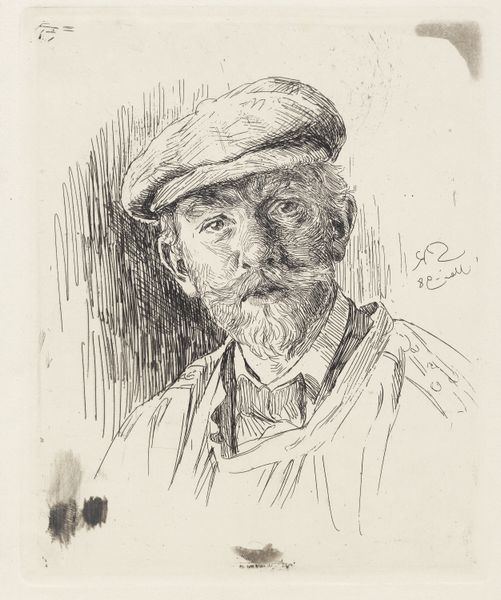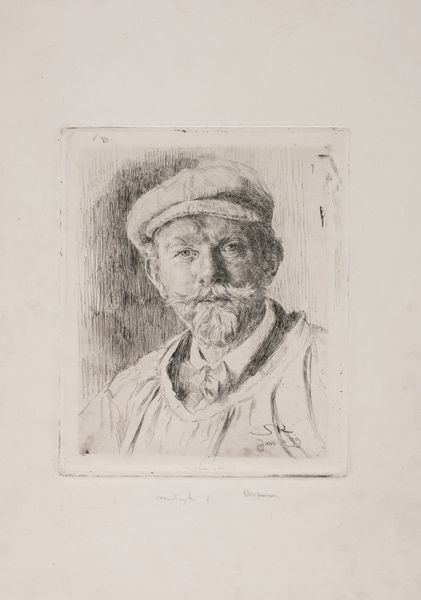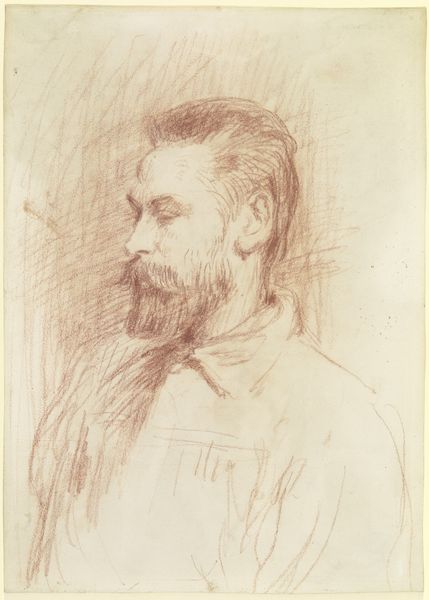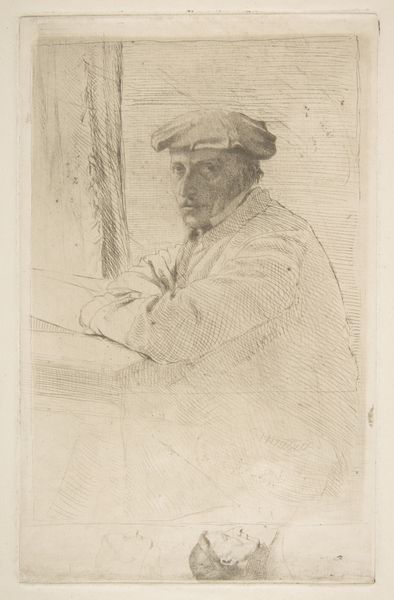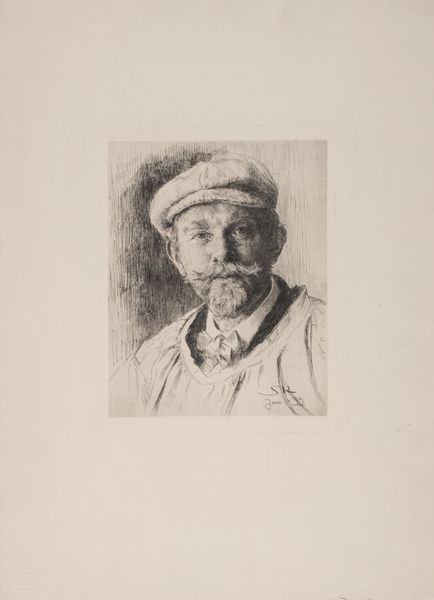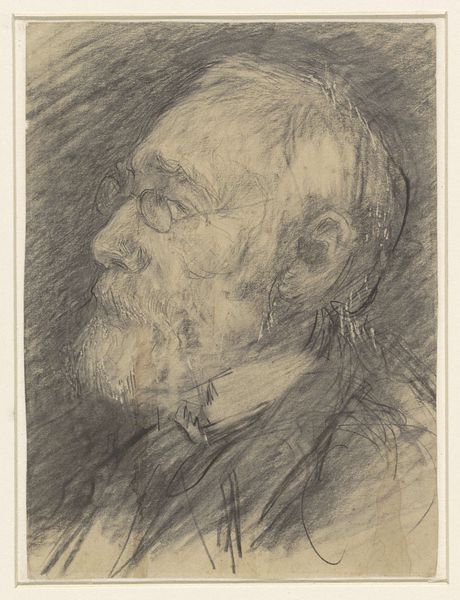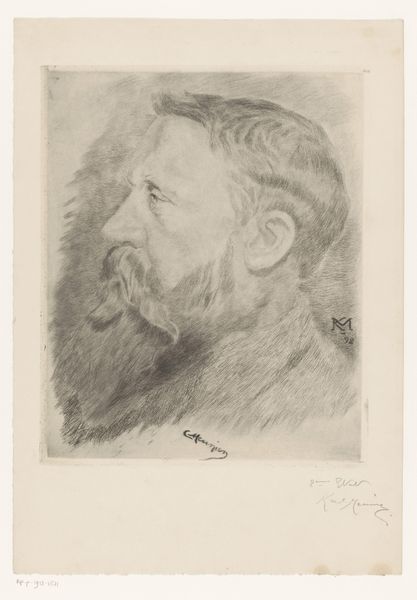
Dimensions: 227 mm (height) x 183 mm (width) (plademaal)
Editor: This is P.S. Krøyer's self-portrait, created in 1899. It’s an etching, and there's a real intimacy to it, the way he's depicted himself. What's your perspective on this work? Curator: Etching is key here. It's an intaglio printmaking process, meaning the image is incised into a metal plate. Consider the labor involved: the artist's hand, the tools, the precise application of acid to create the lines that define his likeness. This wasn’t mass production; it's a craft. Think about what it meant to choose this medium for a self-portrait at the time. Editor: So, the process itself is part of the statement? Curator: Absolutely. Krøyer could have opted for paint, something considered higher art. The selection of etching challenges these established hierarchies, collapsing distinctions between fine art and the more 'humble' crafts. Do you notice anything about his attire and gaze? Editor: He’s wearing a cap and painter's smock...almost like workwear. His direct gaze conveys confidence, but maybe also a little vulnerability? Curator: Exactly. The clothing subtly alludes to his profession and working status as a maker, connecting with the etching medium, which relies so much on manual production and technique. It’s a conscious construction of the artist's identity, shaped by the materials and the social connotations of labor. He’s making the invisible visible. Editor: It’s interesting how the medium and the subject reinforce each other, almost blurring the lines between art and the act of creation itself. Curator: Right. Krøyer pushes us to contemplate art production not merely as aesthetic creation, but also the outcome of labour, consumption, and a social milieu. Editor: I never considered the socio-economic implications of etching before; thank you for pointing it out. I'll definitely think about materiality differently now.
Comments
No comments
Be the first to comment and join the conversation on the ultimate creative platform.
